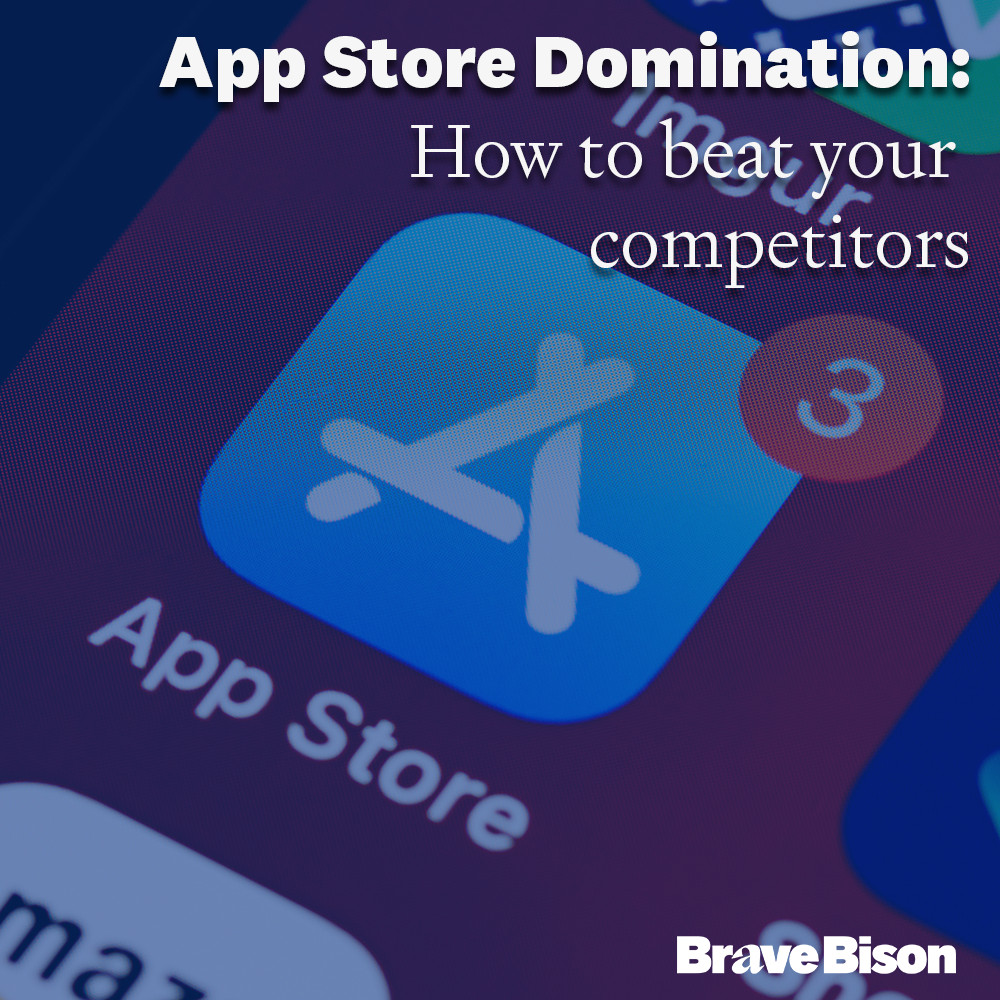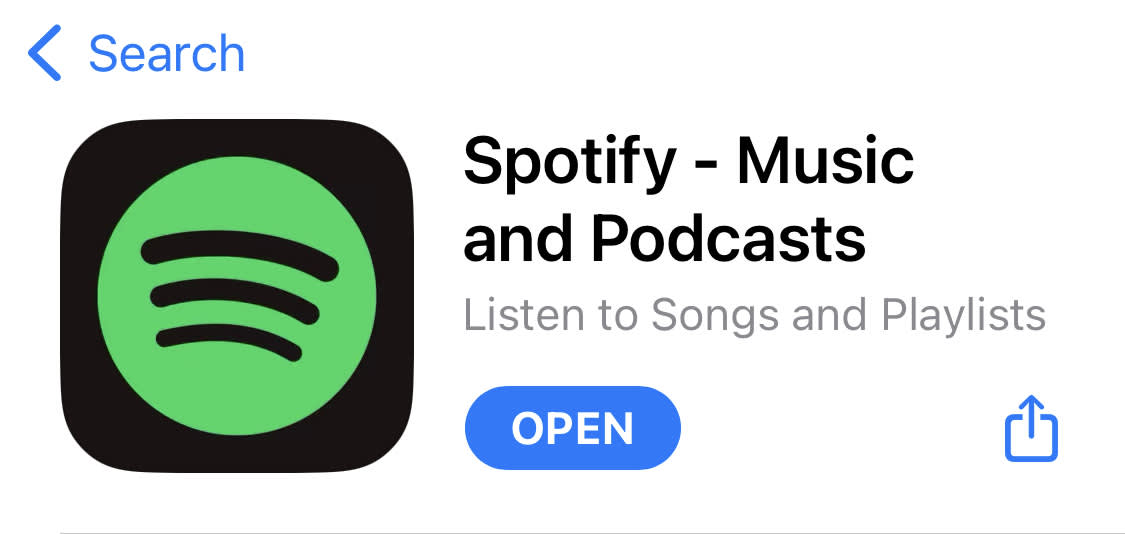
Amplify your App: The Key to App Store Optimisation
June 2023
App store optimisation, or ASO for short, is the process of optimising your app to ensure more people can find and download it through their store of choice. It’s to apps what SEO is for products, and every bit as important as that sounds.
Maybe even more so.
That’s because 70% of all apps are discovered via app stores, which means that optimising your presence within the app store should be your #1 priority. Yet, all too often, it’s overlooked by developers & advertisers who instead focus their attention on other marketing channels to drive customers to their app’s storefront.
So given its importance, what can you do to elevate your visibility and boost install rates via the app store?
The 4 pillars of app store optimisation
Increasing visibility organically
App store ads
Creative optimisation
Amplification
Boosting your presence organically
The very first step to optimising your app store presence is to revisit your metadata. This is perhaps the single most important thing you can do to boost your visibility because, like with SEO, the algorithms use metadata to determine what searches it will appear in.
Your description, short description and promotional text will all have a significant impact on how your app will rank. But by far the most important area of metadata for you to focus on is the title or name of the app itself.
To paraphrase Shakespeare: “What’s in a name? Would an app by any other name still rank as highly?”
When it comes to ASO, your title/app name should be your one true love. This is the most important field for metadata. So here you should include the most relevant keywords for your app and the ones that you want to rank highest for.
Some developers might be tempted to keep this area “clean” and “on brand”. But given that both Apple and Google rely heavily on the metadata in this field in order to determine an app’s rank - adding strategic keywords here is an absolute must.
If you don't believe us just look at some of the world’s top-performing apps, which boost their presence by cleverly incorporating keywords into their title. Spotify is a key example of this.

It’s important to note that each app store has its own nuances that you will need to navigate, you cannot simply replicate your strategy from one app store to the other.
This is where a good agency, paired with the right tools (AppTweak, Mobile Action & Appsflyer), can help you to make the most of your app store placement.
Complement your organic rankings with app store ads
App store ads are a great tool to connect your app with relevant audiences who search for a particular keyword. Best of all these ads show up above organic search results, and with Apple Store ads offering a conversion rate of 50%, they offer a significant opportunity to boost visibility and increase installs.
To get the very best results advertisers should use a mix of match types so that their apps show up in both exact and broad searches. You should also adapt and optimise your strategy over time, harnessing data to change your bids and your budgets based on how well your ads are performing.
The joy of app store ads is that they work in harmony with your ASO. By increasing installs through the use of targeted ads you indicate to the algorithm that your app is relevant for the search terms that delivered installs. It will then reward your organic optimisation by improving your ranking for those keywords. It’s a virtuous cycle. Get it right and you can create a snowball effect, get it wrong however and you can very quickly find yourself out in the cold.
Creative optimisation is key to success
A good first impression will increase conversions by 35%.
Generating more visibility through ASO and ads is just one part of the app store puzzle, if developers really want to covert users, they also need to optimise their creative.
When it comes to apps, first impressions count. In today’s fast-paced society where your audience is constantly bombarded with information - you only have around 3 – 6 seconds to grab their attention.
That means that most people will decide whether to install your app or not based solely on your creative.
When it comes to creative, video is the single most powerful tool at your disposal. A localised video, which captures the attention and showcases your value proposition can make a huge impact on your conversion rate. Screenshots are also vital to making your app a success and can focus on everything from lifestyle to the actual features your product offers.
Whatever approach to creative you take it’s essential that you constantly test your efforts to ensure they’re as effective as possible.
"Approximately 70% of all apps are discovered within the app store, making it the most important platform to prioritise before exploring amplification opportunities. However, I often observe businesses adopting a 'set it and forget it' approach, simply investing in ads to fill visibility gaps without optimising the text and visual elements of their app store listing.
Effective App Store Optimisation requires a cohesive strategy with multiple layers to achieve maximum output. While amplification serves as the icing on the cake, it also presents its own complex challenges that businesses & agencies must address prior to launching a campaign. Failure to do so can lead to significant discrepancies and underreporting."
- Kit Bienias, Performance Director, Growth.
Turn your app strategy all the way up to 11
If you want to scale your app further, you can't rely solely on the app store as your only means of promotion; you need to amplify your reach to a wider audience.
3 key pillars of amplifying an app
Measurement
Platform selection
Deep linking campaigns
Unlike app store optimisation (ASO), amplification involves promoting your app outside of the app store to reach a qualified audience. However, without the correct measurement framework in place, you run the risk of making costly errors.
The challenge with amplification lies in connecting the dots between the ad platform from which you serve the ads, and the installations that happen in the app store. These are two separate entities. Adding to this challenge is the fact that some individuals opt out of tracking due to iOS14, resulting in a complex consumer journey to navigate.
Fortunately, there are several solutions that can be implemented. The fundamental solution involves integrating a Software Development Kit (SDK) either through a platform's own tech stack or by partnering with recommended platforms. This integration allows for the attribution of installs back into the ad platform.
Furthermore, in response to Apple's App Tracking Transparency (ATT), new measurement solutions have emerged. These solutions address privacy concerns while still enabling advertisers to understand the effectiveness of their ad campaigns. These measurement solutions rely on anonymised and aggregated data instead of unique customer data, ensuring compliance with ATT.
Finally, there are ad formats specifically designed to encourage users to install an app. These campaigns utilise deep linking functionality, allowing users to go directly from an ad to the app store, bypassing the need to visit a website first.
If you're ready to be at the forefront of ASO and maximise your strategy to the full then drop us a line.
